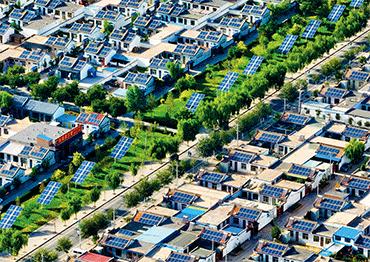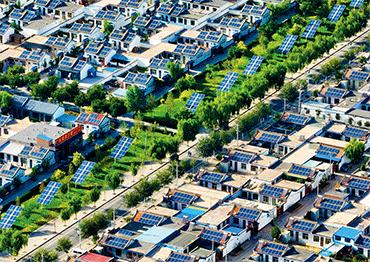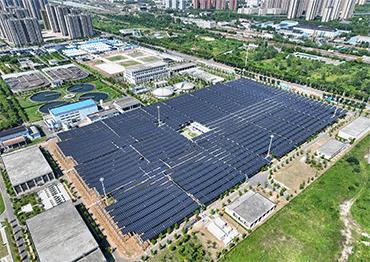The integration of distributed PV into power markets is expected to lead to more rational allocation of PV panels and as a result alleviate the grid absorption pressure. Zhou said that integrating distributed PV into power markets aims to regulate grid connection and encourage local absorption.
Local absorption is regarded as essential. The NDRC guidance released in October 2024 stressed “promoting local consumption of distributed new energy.”
“Promoting local absorption means relying less on feeding the electricity back to the grid,” Zhou said. In economically developed places such as Jiangsu and Zhejiang provinces, the absorption of commercial and industrial distributed PV is not a problem as companies themselves can consume. But for distributed PV installed at the user end, particularly in rural areas where power usage is minimal, local absorption is difficult unless it can be used for township enterprises or hotels. “In these places local and onsite consumption face big challenges,” Zhou said.
Zhou suggested expanding electrification in rural areas to increase use of excess solar capacity. Promoting electric vehicles, heat pumps and electrical farm machinery will significantly increase electricity demand.
There is also no fair trading mechanism to promote local consumption, like allowing excess electricity to be sold to nearby users directly instead of having to sell to the grid.
Peer-to-peer electricity trading (or onsite consumption) has been discussed for years, but progress is slow. Bypassing the grid entirely means distributed PV projects only need to pay “wheeling charges” rather than selling the electricity to the grid. Wheeling charges are fees for directly transmitting electricity on grids, ensuring that the third-party wheeling provider, or utility, is paid for its services.
“Peer-to-peer trading does not necessarily mean a physical connection between distributed PV and users. It can be realized in various ways,” Zhou said. For example, Henan Province has pioneered an integrated model that achieves direct supply of renewable electricity within distribution grids or microgrid units. In May 2024, Henan set a goal of gradually building microgrid units to guarantee stable local renewable power supply. Zhou said this is also a kind of peer-to-peer trading.
Jia Yu, general manager of Yulin Electricity Investment Company, told media that the most economic, scientific and efficient way of using distributed new energy is local development, nearby transmission and local consumption.
As early as 2017, the NDRC and NEA encouraged distributed PV projects and nearby end-users to cooperate to realize local consumption via various means, and grid companies to charge wheeling fees for market-based power transactions. In 2019, the NDRC and NEA publicized 26 pilot zones for market trading of distributed electricity mainly in Hubei, Henan and Shanxi provinces. In September 2022, Zhejiang Province released the first regional electricity rules, stipulating that starting from January 2023, distributed electricity generators can directly trade power with nearby users, the first of its kind in China.
But the model is yet to be developed at large scale. Zhou believes the obstacle to peer-to-peer trading is the absence of a fair transaction mechanism.
“While distributed PV projects sell power directly to consumers and only pay wheeling fees to grid companies, the fees fail to fully account for the latter’s infrastructure costs like capacity charges. This not only discourages grid operators but also creates unfairness for other grid users who share the infrastructure costs,” Zhou said.
At its core, many peer-to-peer trading projects still rely on the main grid for backup power security as a fallback guarantee. Grid operators need to recover investments in grid infrastructure and maintenance costs while ensuring a reasonable return. Yet, current wheeling charges, which are decided by local regulators, fail to reflect these costs, discouraging grid companies from supporting such trading models.
Wheeling fees range from 0.015-0.05 yuan/kWh and can drop to zero for transactions at the same voltage level. Grid companies generally charge over 0.2 yuan/kWh for electricity transmission and distribution, subsidies included.
“The core issue lies in clarifying the underlying costs and defining fee structures, which will drive local and on-site renewable energy consumption,” Zhou said.

 Old Version
Old Version

